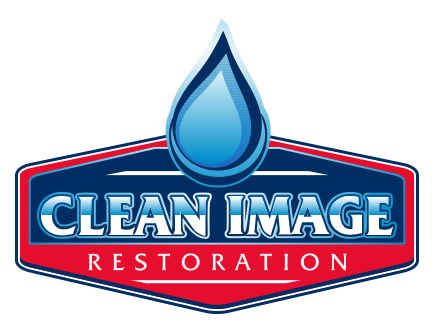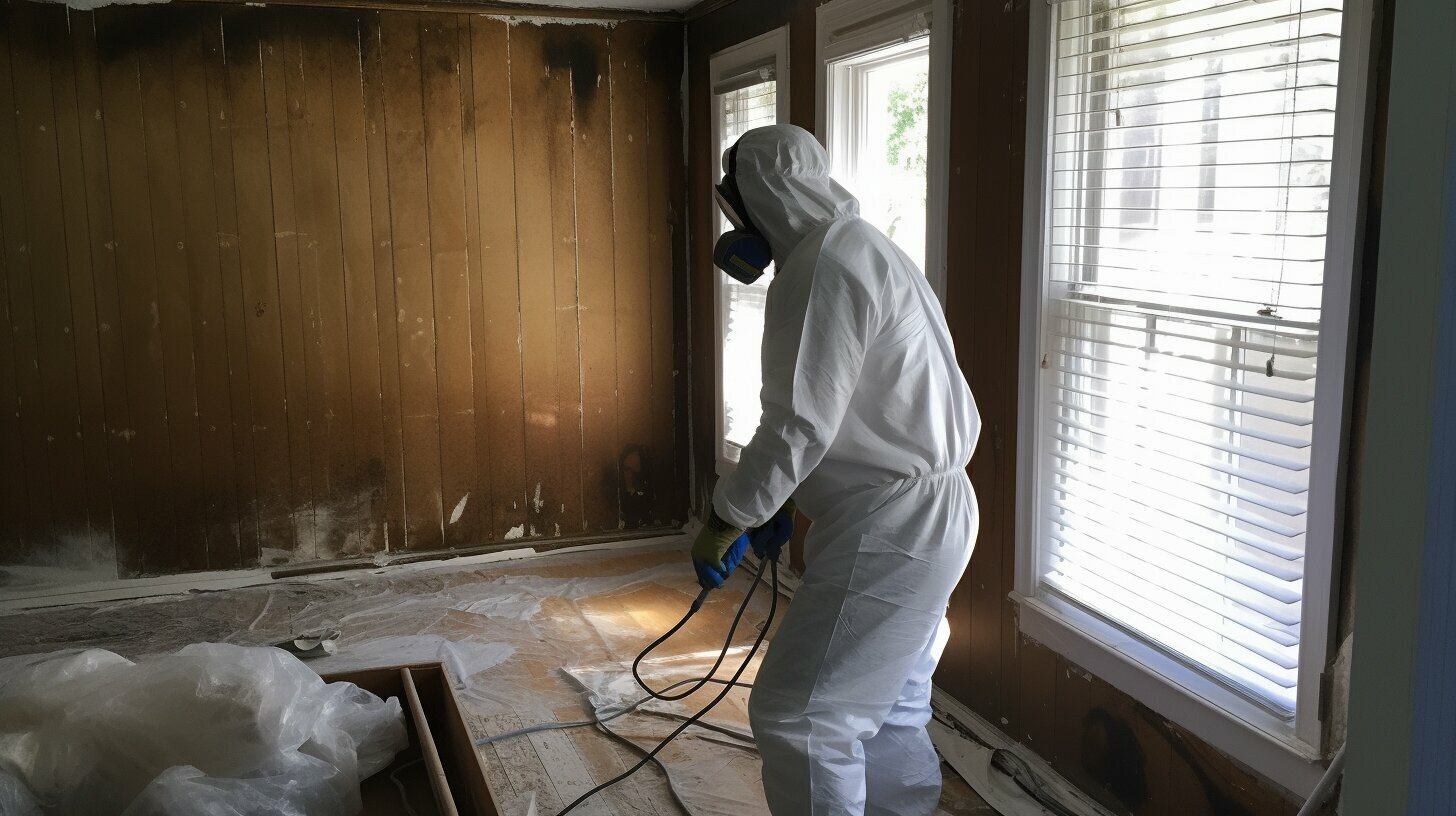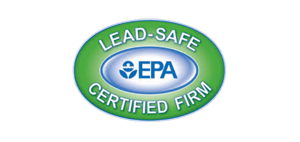Can we fix water damage in our homes, or is it too late? This question makes us think about how to fix water damage at home. If water gets into your home, you must act fast. The first step is to find where the water came from and see how bad it is. Then, you can start fixing it.
Water damage can be small or huge, from a leaky pipe to a big storm. Small leaks might be fixed by you, but big damage needs experts. Knowing when to call for help can save money and prevent bigger problems like mold. Let’s look at how to fix water damage quickly to avoid dangers.
Key Takeaways
- Identifying the water source quickly is crucial for effective home water damage repair.
- The cleanliness and origin of the water impact the overall water damage restoration process.
- Immediate action within 24 hours is necessary to prevent mold growth and further damage.
- Minor water damage may be addressed with DIY methods, while significant damage often requires professional water damage solutions.
- Understanding the severity of the damage helps determine the appropriate steps for restoration.
Understanding the Causes of Water Damage
Water damage can come from many sources, often surprising homeowners. Severe weather like hurricanes, heavy rain, or snowmelt can cause flooding. This is a top reason for water damage in homes.
Leaks in roofs are another common cause. Even a small leak can lead to big problems over time. Roof materials can wear out or get damaged by weather, letting water in. It’s important to check and maintain plumbing to avoid burst pipes, which can cause a lot of damage quickly.
Household appliances like washing machines, dishwashers, and water heaters can also cause water damage. If they break or malfunction, they can spill water, causing big problems. Regular checks and maintenance can help prevent these issues.
Blocked gutters and downspouts are other sources of water damage. If gutters get clogged, water can overflow and harm your home’s foundation or walls. Cleaning gutters regularly is key to stopping water buildup and overflow.
Issues with HVAC systems can also lead to water damage. Air conditioners or other systems might leak or have condensation problems, damaging walls, floors, and ceilings. Getting your HVAC checked and serviced seasonally can help avoid these problems.
Sewage backups are a serious type of water damage. They happen when sewer lines get blocked or break, posing health risks and needing quick professional help. Knowing about these causes of water damage helps homeowners prevent and deal with problems fast.
Immediate Actions to Take After Water Damage
When you face water damage, acting fast is key to protect your property and keep everyone safe. First, make sure everyone is safe by checking the area is secure. It’s also important to turn off the electricity to prevent electrical dangers from water.
Next, find and stop the water leak. This might mean turning off a leaking pipe, fixing a broken appliance, or dealing with a structural problem. After stopping the leak, call your insurance company right away. This helps with documentation and gets you the right experts for fixing water damage.
Quickly remove wet items and start drying to prevent mold and more damage. Don’t leave wet things alone as they can cause mold and harm your building. Using fans or dehumidifiers can help dry things out.
If the damage is big or dangerous, call in professional water restoration teams. They have the right tools and knowledge to fix water damage well. Their help ensures a complete clean-up, lessening the bad effects of water damage.
Can Water Damage Be Fixed in House?
Yes, you can fix water damage at home for minor issues or leaks with clean water. Start by finding and stopping the water leak. Then, remove any water and dry the area to stop mold from growing.
For small water damage, you might only need basic tools and a fan or dehumidifier. But, you must act fast to avoid more damage from moisture.
Big water damage or issues with dirty water need experts. They have the right tools and knowledge to fix the damage safely and effectively.
While you can handle some water damage yourself, know your limits. Getting professional help can stop small issues from becoming big problems. This saves time and money later on.
The Water Damage Inspection and Assessment Process
Before starting any restoration work, it’s crucial to inspect and assess the water damage. This begins by finding where the water came from, like leaks or natural disasters. Knowing the source helps create a detailed plan to fix the issue.
Then, we look closely at how much damage there is. We check how far the moisture has spread and its effect on different materials. This tells us if the damage is new or old, which affects how we fix it.
Experts use special tools for a detailed inspection. Moisture meters, thermal cameras, and hygrometers help find hidden moisture and check if structures are safe. These tools make sure we don’t miss any hidden damage.
Finally, we figure out how severe the water damage is. We sort the damage into categories to understand its impact on health and safety. This helps us know what steps to take next.
Working with experts ensures a detailed check-up, reducing risks and costs later on. A good inspection and evaluation are key to a successful fix.
Drying Out Your Home
Drying out a home after water damage is key to recovery. It uses special tools like dehumidifiers and fans for moisture removal. Acting fast is important to stop mold from growing.
The time it takes to dry out a home varies with the damage level. It can take a few days to weeks. Quick drying helps stop mold and makes repairs easier. A good moisture removal plan makes the whole recovery process work better.
The main goal is to make the home dry to stop mold and help with repairs. This step is crucial for fixing the home safely and keeping it strong.
Cleaning and Sanitizing Affected Areas
After removing the water, cleaning the area is key. This is very important, especially if the water was dirty like sewage. To clean up, you need to use the right cleaners and follow strict cleaning steps.
A good cleaning plan includes several steps:
- Surface Cleaning: First, get rid of debris and clean surfaces with the right cleaners. This stops more contamination.
- Disinfecting: Then, use disinfectants made for water damage. They help kill harmful germs and clean the area.
- Air Purification: Finally, use air purifiers and dehumidifiers to clean the air. This removes pollutants.
It’s best to hire professionals for big clean-ups, especially if the water was very dirty. They have the right tools and knowledge to fully clean the area. This makes the space safe to live in again. By doing this, homeowners can avoid health problems and stop future contamination.
Restoring and Rebuilding After Water Damage
After water damage, fixing and rebuilding is key to recovery. The work needed can range from small fixes to big rebuilds. It’s important to know the damage’s extent to fix or replace what’s damaged right.
Fixing water-damaged homes can be tough, from replacing plasterboard to redoing floors. Sometimes, you might not be able to do it yourself. That’s where skilled contractors come in, making the rebuilding easier.
For big damage, rebuilding after a flood means more than just surface fixes. Things like beams, insulation, and wiring might need to be checked and replaced. Working with pros ensures repairs follow safety and quality rules.
- Assessment of structural integrity
- Replacement of damaged materials
- Inspection and upgrading of electrical and plumbing systems
- Applying new finishes and repainting
The aim is to make the home as good as new, or even better. Whether it’s small repairs or a full rebuild, paying attention to details is crucial. Getting help from water damage restoration experts can give you peace of mind and ensure quality work.
Preventing Future Water Damage
Preventing water damage is key to keeping your home safe. By acting early, you can avoid expensive repairs and health risks from mold and mildew. Here are some ways to protect your home:
- Check and keep your home’s drainage systems in good shape. Make sure gutters and downspouts are clear to let water flow away from your foundation.
- Look at appliances like washing machines, dishwashers, and water heaters for leaks or problems. Fixing them quickly can stop big water damage.
- Think about getting a sump pump for your basement or crawlspace. A sump pump keeps water away from your home, lowering flood and water damage risks.
- Regularly check your plumbing for leaks, corrosion, or other issues that could cause water damage.
- Make sure the ground around your home slopes away from the foundation. This stops water from gathering and getting into your basement or crawlspace.
- Use water leak detection devices. These can tell you about leaks early, so you can fix them fast and prevent big damage.
Knowing what makes your home vulnerable and fixing those issues early is crucial. By using these tips, you can greatly reduce the chance and impact of water problems. This makes your home safer and more secure.
Conclusion
Addressing water damage in a home is crucial for keeping it safe and sound. By understanding what causes water damage, homeowners can get ready and handle emergencies well. Quick action and early detection are key to reducing damage and making fixing easier.
Checking and assessing the damage is important for a good plan to fix it. Drying out quickly and well stops mold and more damage. Cleaning and sanitizing remove harmful germs, keeping everyone healthy.
Fixing water damage needs careful work and sometimes expert help to make it like before. It’s also key to prevent future damage. By doing these things, homeowners keep their homes strong and safe, making them cozy and secure.






